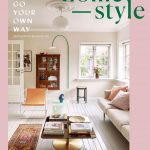These appealingly precise pieces depicting folks going about their business are made by Melbourne-based Kiwi Mark Alsweiler, who joined us for a friendly chat.
On a trip to the US with a uni mate when he was about 22, New York blew Mark Alsweiler’s small-town New Zealand mind. While he was there, he bought a book called Beautiful Losers that featured artists including Barry McGee, Margaret Kilgallen, Chris Johanson, Clare Rojas and Geoff McFetridge, and the art they were making opened up a creative pathway that still has a big influence on his work today.
So, Mark, it all began in New York… I hadn’t been to a big city like that before, and seeing it made me want to live a creative life in a city with lots of different people making different things. After finishing a Bachelor of Arts majoring in design at Otago University, I was at a bit of a loss as to what to do with myself, so I started making a few paintings to keep myself busy. A friend bought one and his boss, who was a bit of a collector, saw it and put on a show for me. That went well and I’ve been chipping away at it ever since.
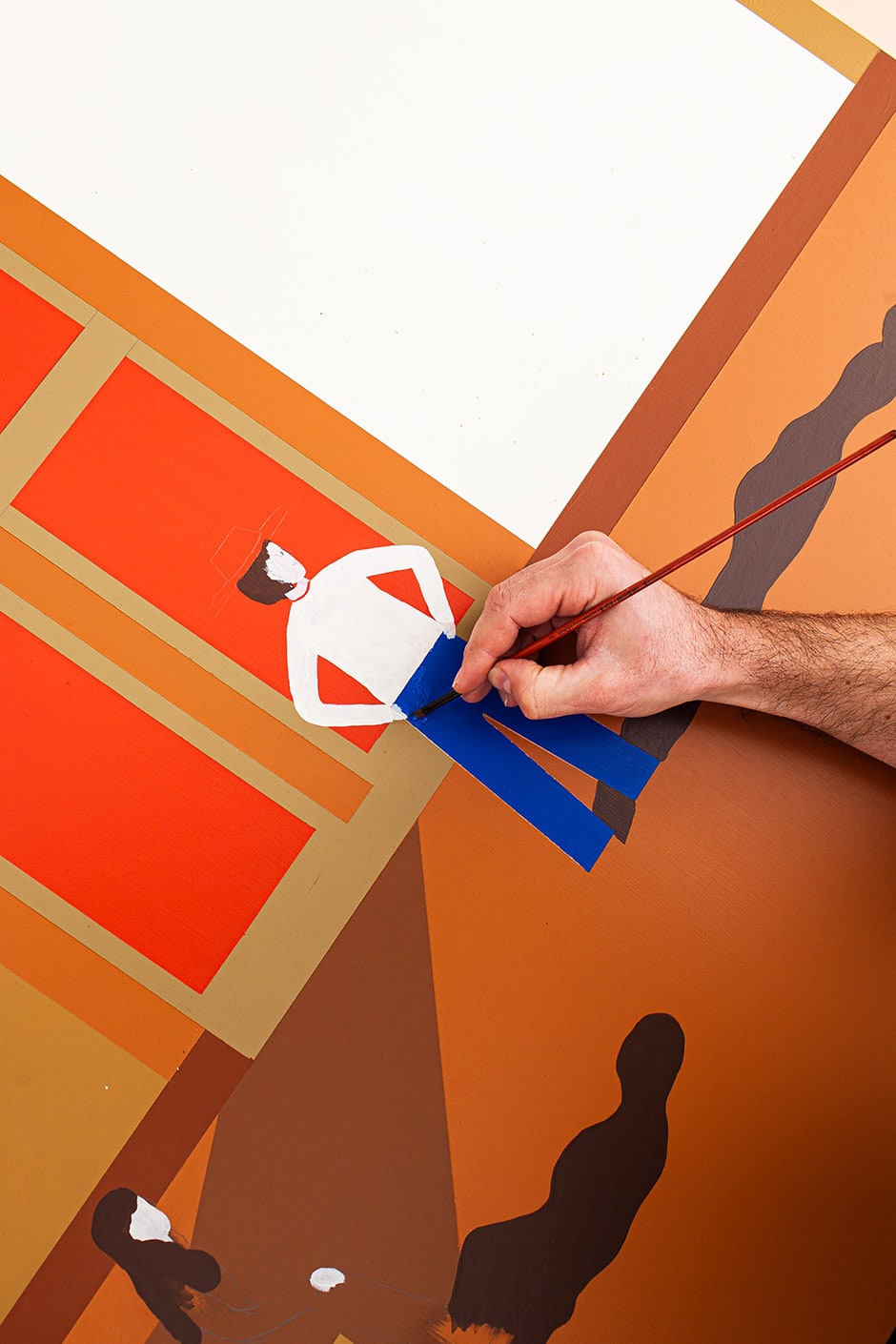
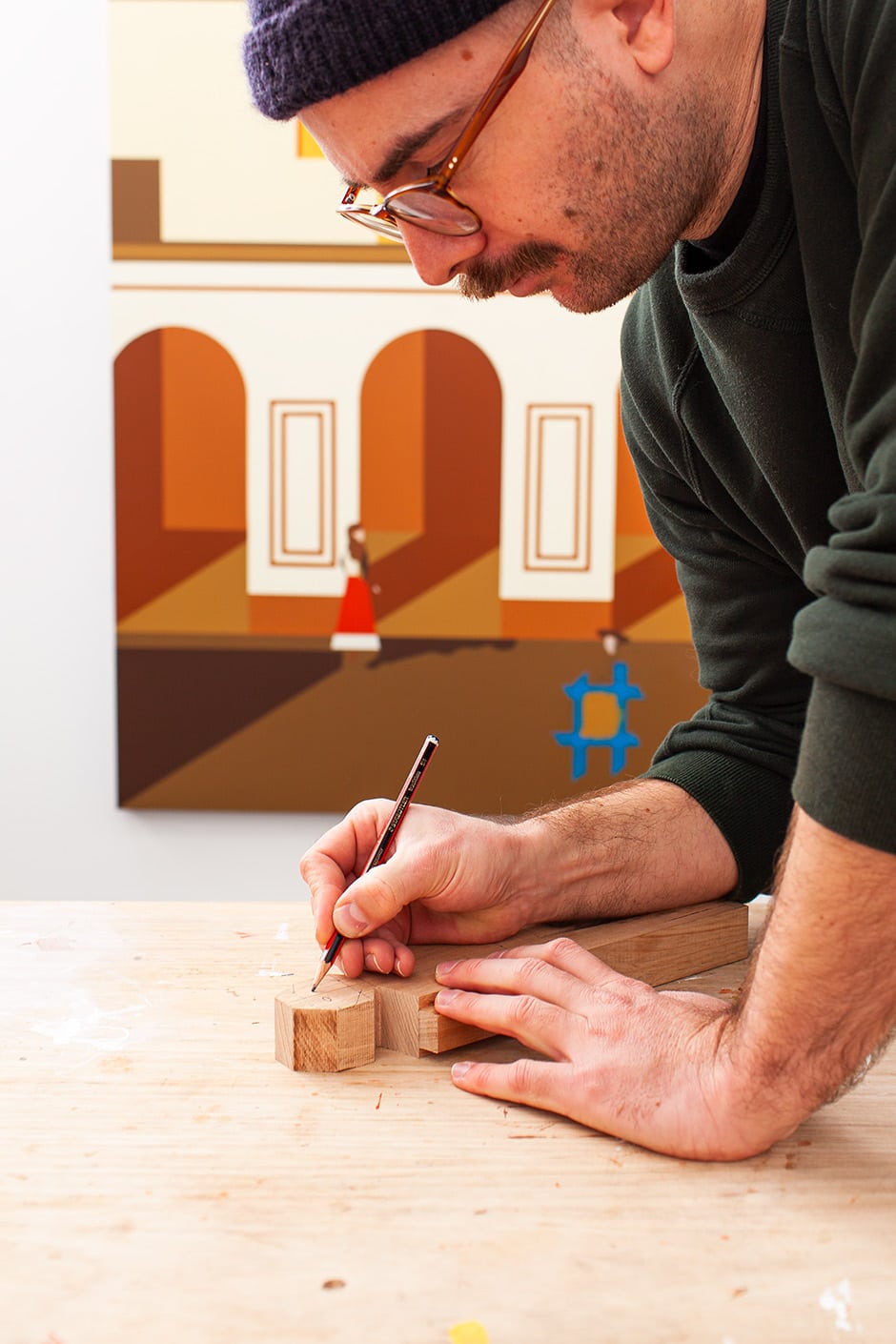
Did you have aspirations to become an artist as a kid? I actually just looked through some old schoolbooks the last time I was home from Melbourne, and according to those, I wanted to play cricket for a job. But like most kids, I enjoyed drawing and would paint after school if it was rainy outside. I was heading towards graphic design when I was at high school, so I’ve only veered off that course slightly.
You make wood-panelled paintings and timber sculptures — which came first? The paintings. I just started playing around with wooden sculptures for fun, but now they’ve become a big part of my work. I try to let the paintings inform the sculptures and vice versa, so they all work together for exhibitions.
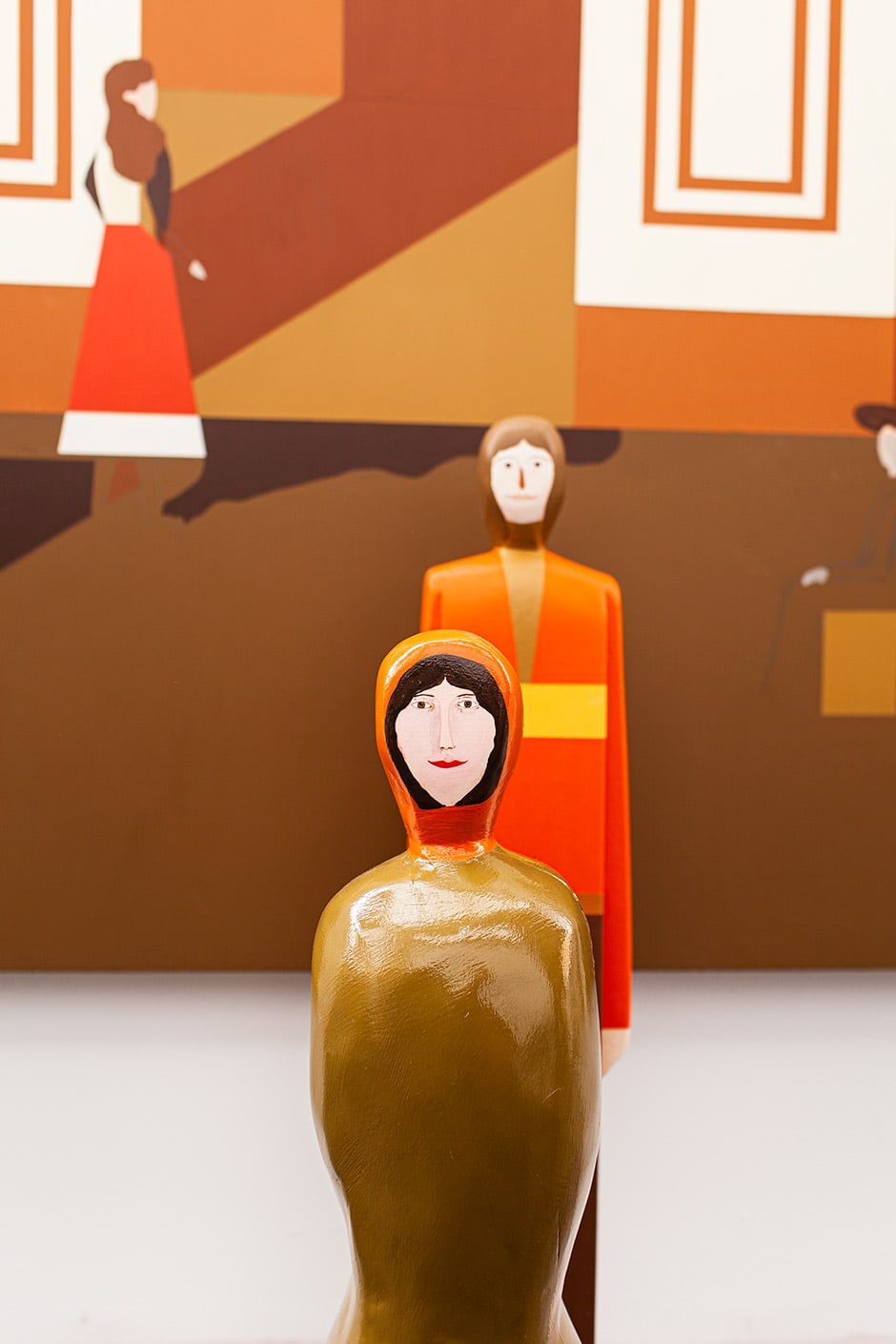
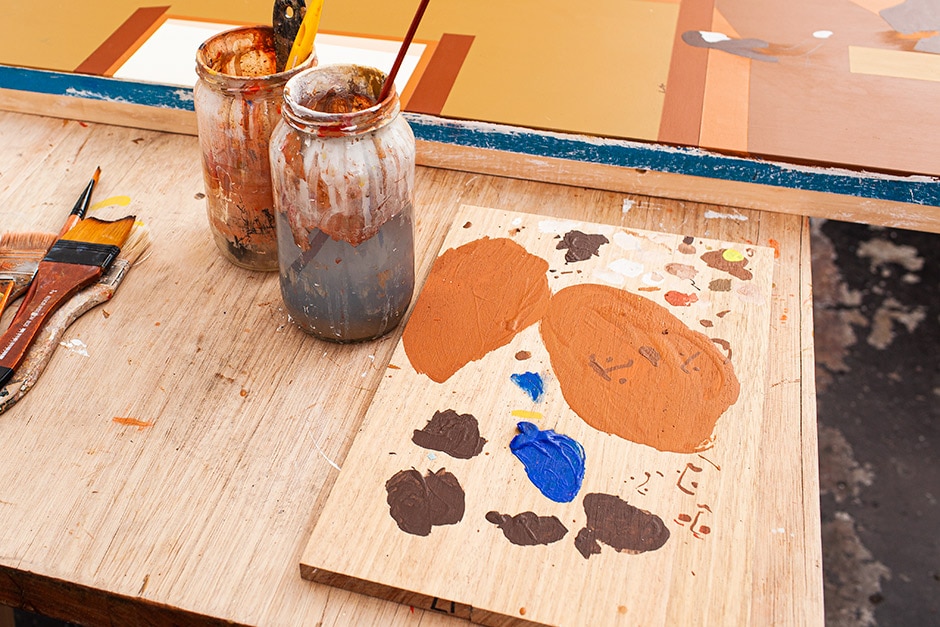
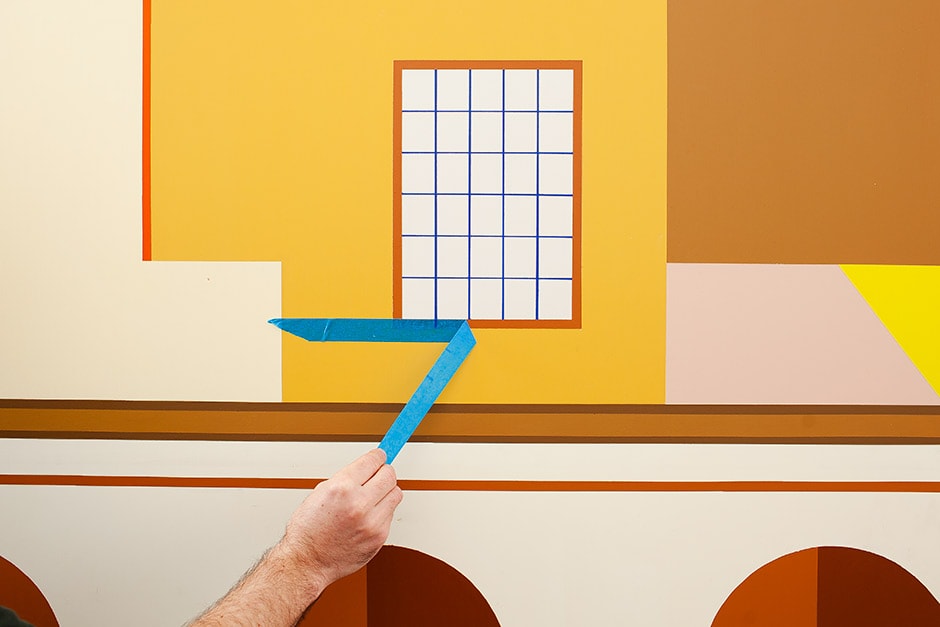
Working in both 2D and 3D mediums, how does your creative process flow? I’m mainly in the studio working on the paintings these days, because they take a lot longer to finish. But I’m lucky enough to have access to a big shared workshop within my studio building, so if I’m tired of painting, I’ll spend a few days in there making sculptures, getting dusty and trying not to cut off my fingers with all the different types of power saws. Then I’ll be ready to get back into painting again, so it works well and keeps things interesting.
You’ve developed quite a distinct aesthetic — what informs your work? Lots of things: my everyday environment and photos I take when wandering around town, reference material I find online, architecture old and new, people going about their day, movies and music, folk and outsider art. Travelling to new places always makes me see the world differently, too. I recently went to Japan and it was so inspiring — the buildings, signs, people and gardens… pretty much everywhere you look is visually amazing over there.
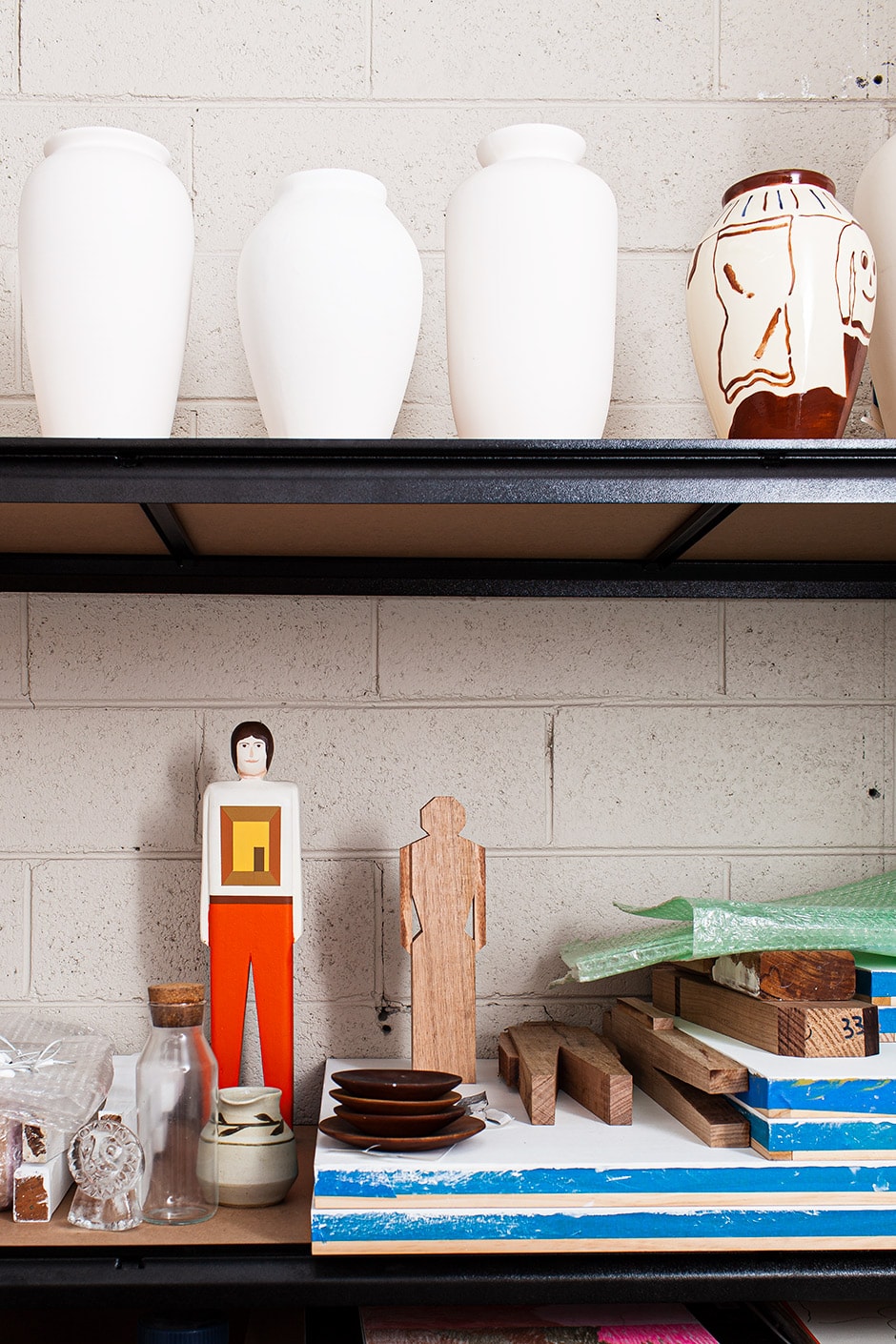
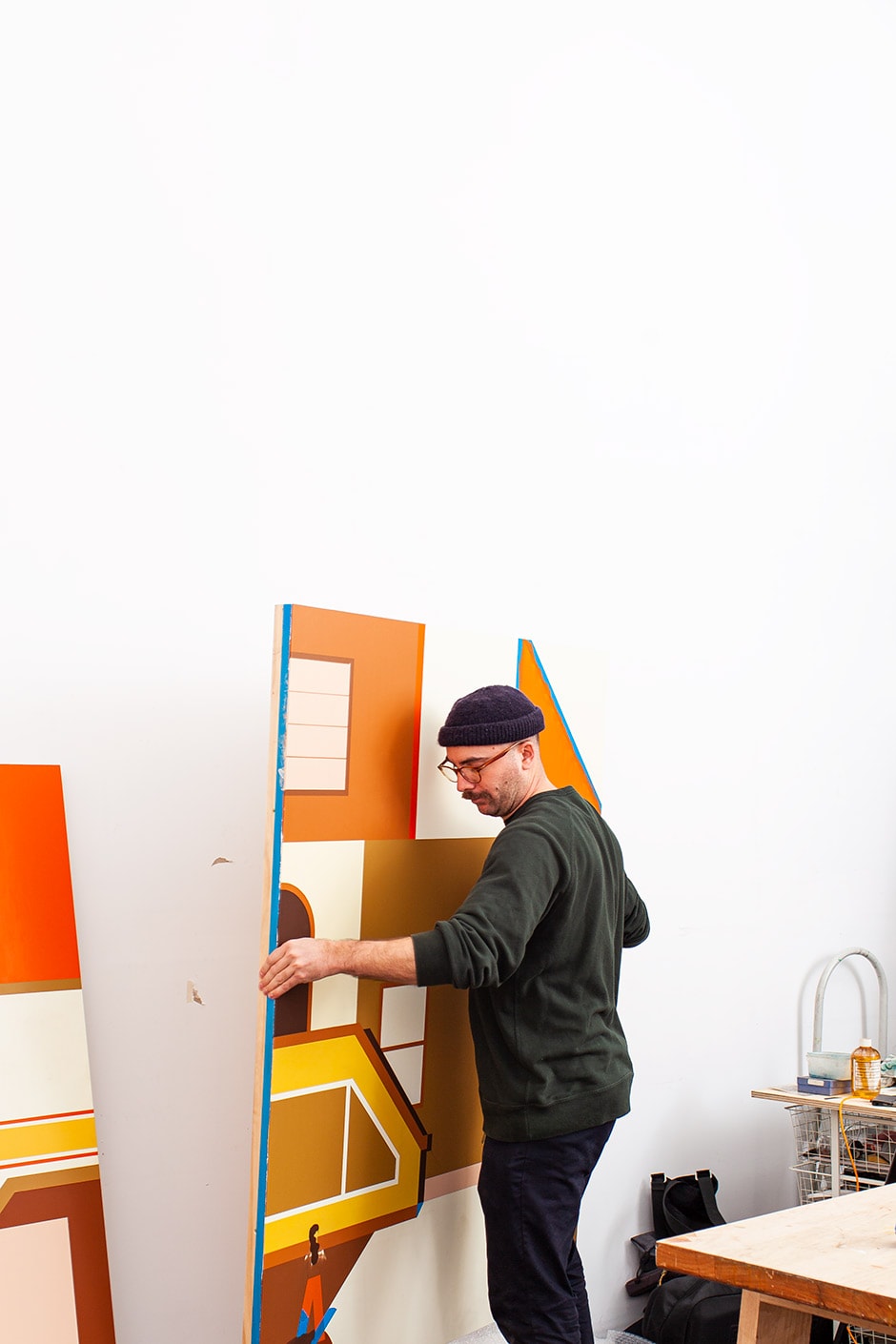
You have a show opening at SPA_CE Gallery in Napier on October 11 — what’s the theme? I have some reoccurring themes that I work around and develop ideas off, including positivity, balance, contentment, the everyday, community, duality and the ordinary, to name a few.
The acrylic paints you work with are always on point — what inspires your colour palette? It’s pretty instinctive when I’m working within a painting, but I also work with colour references that could come from anywhere, really, from the colours of a building I walk past, to something I see online or in a movie. I usually save a whole lot of photos with certain colour combinations to revisit later and use as reference material.
What tools can you not be without in the studio? A pencil, hammer, handsaw, chisel, angle grinder, drop saw, drill and sander, plus masking tape and lots of paintbrushes.
In your day-to-day practice, how do you kick-start your creativity? I try to go for a walk or bike ride or get a coffee somewhere out and about before going into the studio in the mornings. I think it helps creatively to see a bit of action going on in the world before you go off into your little studio world. Going to bookshops and looking at other artists’ books always makes me want to make new work.
How do you like to unwind? By going to watch a band or for a bushwalk. It can be hard to be constantly creative, so I think taking a break and getting outside and having time away from what you’re working on is helpful to help you stay positive and keep things moving forward when you’re back in the studio.
markalsweiler.com
thisisspace.co.nz
Interview Alice Lines
Photography Gina Diggle


